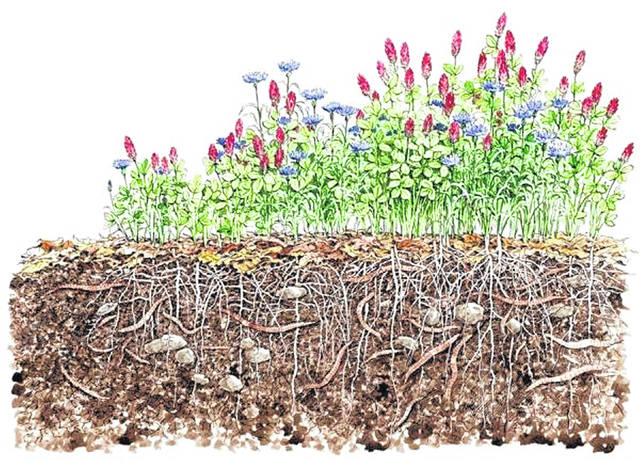


Soil is one of the world’s most important natural resources. Together with air and water it is the basis for life on planet earth.
We are the stewards of this natural resource and one of the best ways to create sustainability in your own garden is to plant a fall cover crop. It is guaranteed to enrich your garden soil and provide weed control.
“Cover crops put nutrients and fertilizer back into the soil while forming an organic mat-like layer that discourages stubborn weeds from reappearing.” said Shelby County Agriculture extension agent Matt Schmerge. “Cover crops – typically planted as seeds in early fall – protect the soil from erosion and preve nt nutrient runoff during the winter. These placeholder crops then become a layer of organic material for the garden in the spring.”
The practice works in traditional gardens as well as raised beds now is the time plant.”
Often referred to as a green manure, a cover crop is planted in fall after harvest and tilled back into the ground in the spring before planting. For seed packets search online for cover crops or green manure for vegetable gardens. A variety of seed options should pop up. Choose the one that seems to fit best with your needs. I usually choose a green manure option that includes six or seven seed varieties. Examples include: red clover, hairy vetch, oats, buckwheat, forage rye, Italian rye grass, field beans and forage pea.
When your fall vegetable harvest is complete rototill your garden crops into the soil, excluding including vegetables that had diseases. Summer vegetable plants decay into the soil to add organic material and create humus. Then scatter the cover crop seeds into the loose soil. Fertilize with a complete fertilizer like 15-15-15, if needed. Many garden soils are already rich enough to sustain the fall crop.
Crops will continue to grow during fall and winter. In the spring you can plow, spade, or till plants under. Their roots penetrate and help loosen heavy-textured soils, allowing better air and water penetration. They provide habitat and food (nectar, pollen) for beneficial insects and late-season pollinators.
I have been planting a cover crop on my garden the past eight years. The process has always improved the texture and fertility of the garden soil. I also noticed that a stubborn thistle patch all but disappeared next year. First till the garden vegetables back into the soil. Spread the cover crop seeds generously by hand or you can seed it by walking behind fertilizer spreader.
The Ohio Farm Bureau points out the cover crops are grown primarily for improving the land rather than harvest. Cover crops have been in use for centuries. The ancient Greeks and Romans used them to protect precious soil. .
While you and your garden are at rest over the winter, you will have a garden helper silently working to improve your soil!




